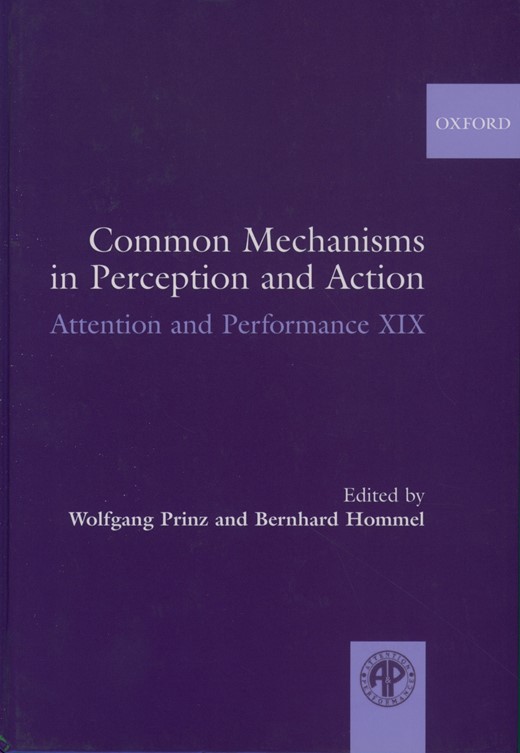 Common Mechanisms in Perception and Action: Attention and Performance XIX
Common Mechanisms in Perception and Action: Attention and Performance XIX
Contents
19 The visual analysis of bodily motion
Get access-
Published:February 2002
Cite
Abstract
Abstract. Does the visual system process human movement differently from object movement? If so, what are the criteria that the visual system uses to discriminate between human and non-human motions? A series of psychophysical studies was conducted to address these questions by examining the conditions under which the visual perception of human and object motions appears to rely on similar and different mechanisms. To determine whether motion integration across space is similar for human and non-human movements, observers viewed moving stimuli through a set of spatially disconnected apertures. Under these conditions, motion integration across space was found to signi1cantly differ for human and object movements as long as the human movement was upright and consistent with normal locomotion. An apparent-motion paradigm was used to investigate motion integration across time. It was found that human and object movements are similarly perceived at brief temporal intervals. However, important differences arise at slower display rates. Finally, recent PET data indicate motor-system activity during the perception of possible, but not impossible, human movements. When considered together, these results support the hypothesis that the visual analysis of human movement does differ from the visual analysis of a wide variety of non-human movements whenever visual motion signals are consistent with an observer’s internal representation of possible human movements.
Sign in
Personal account
- Sign in with email/username & password
- Get email alerts
- Save searches
- Purchase content
- Activate your purchase/trial code
- Add your ORCID iD
Purchase
Our books are available by subscription or purchase to libraries and institutions.
Purchasing information| Month: | Total Views: |
|---|---|
| September 2024 | 2 |

Get help with access
Institutional access
Access to content on Oxford Academic is often provided through institutional subscriptions and purchases. If you are a member of an institution with an active account, you may be able to access content in one of the following ways:
IP based access
Typically, access is provided across an institutional network to a range of IP addresses. This authentication occurs automatically, and it is not possible to sign out of an IP authenticated account.
Sign in through your institution
Choose this option to get remote access when outside your institution. Shibboleth/Open Athens technology is used to provide single sign-on between your institution’s website and Oxford Academic.
If your institution is not listed or you cannot sign in to your institution’s website, please contact your librarian or administrator.
Sign in with a library card
Enter your library card number to sign in. If you cannot sign in, please contact your librarian.
Society Members
Society member access to a journal is achieved in one of the following ways:
Sign in through society site
Many societies offer single sign-on between the society website and Oxford Academic. If you see ‘Sign in through society site’ in the sign in pane within a journal:
If you do not have a society account or have forgotten your username or password, please contact your society.
Sign in using a personal account
Some societies use Oxford Academic personal accounts to provide access to their members. See below.
Personal account
A personal account can be used to get email alerts, save searches, purchase content, and activate subscriptions.
Some societies use Oxford Academic personal accounts to provide access to their members.
Viewing your signed in accounts
Click the account icon in the top right to:
Signed in but can't access content
Oxford Academic is home to a wide variety of products. The institutional subscription may not cover the content that you are trying to access. If you believe you should have access to that content, please contact your librarian.
Institutional account management
For librarians and administrators, your personal account also provides access to institutional account management. Here you will find options to view and activate subscriptions, manage institutional settings and access options, access usage statistics, and more.